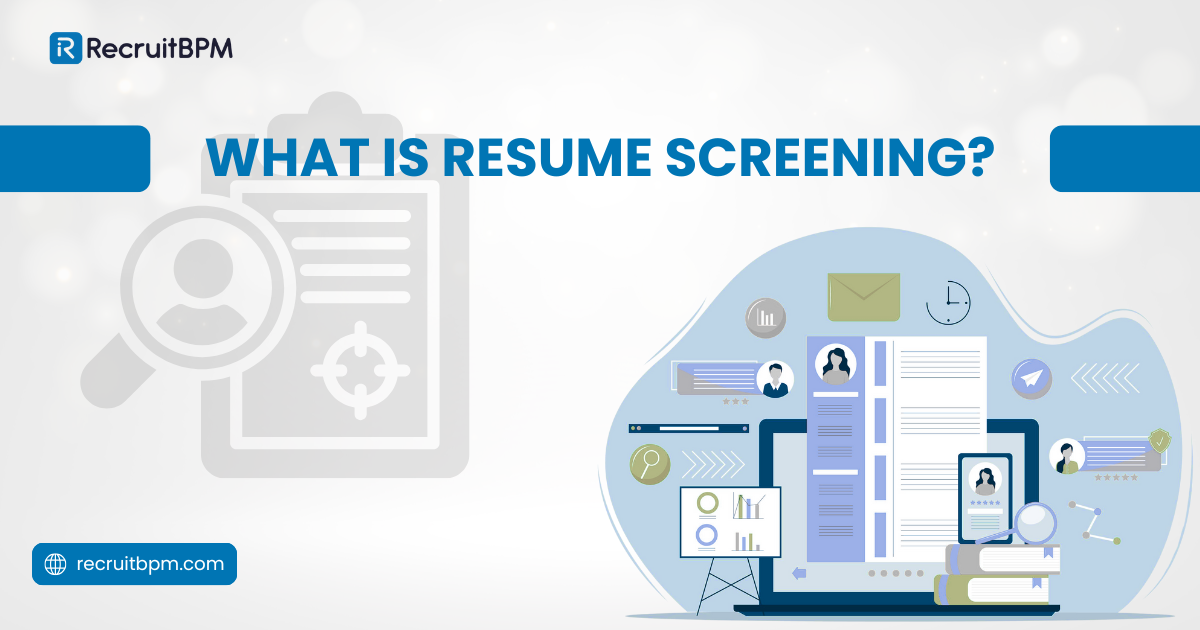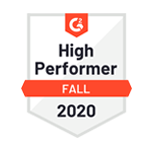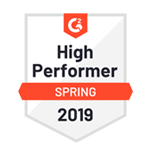Staffing agencies receive an average of 250 applications per single placement. Manually reviewing each resume consumes 23 hours of recruiter time. Resume screening eliminates this bottleneck, helping agencies identify qualified candidates faster while maintaining placement quality.
Modern staffing operations demand efficient screening processes. Understanding resume screening fundamentals transforms how recruitment firms handle candidate evaluation and client delivery.
Understanding Resume Screening
What Resume Screening Means for Recruiters?
Resume screening is the process of evaluating candidate applications to determine qualification levels for specific positions. Recruiters examine resumes to identify candidates matching job requirements based on education, experience, skills, and credentials.
This initial filtering stage separates qualified candidates from unqualified applicants. The screening process creates manageable shortlists from large applicant pools. Staffing professionals use screening to match candidates with client needs efficiently.
Screening serves as the gateway to your recruitment funnel. Only candidates passing this stage advance to interviews or skills assessments. Effective screening protects recruiter time while ensuring client satisfaction.
Manual vs. Automated Resume Screening
Manual screening involves recruiters personally reviewing each resume individually. This approach allows human judgment to catch nuances that software might miss. Recruiters spot synonym usage, unconventional qualifications, and transferable skills during manual review.
However, manual screening requires significant time investment. Studies show recruiters spend only six seconds on initial resume reviews due to volume pressures.
Automated screening uses software and algorithms to filter resumes based on predetermined criteria. These systems scan for specific keywords, required qualifications, and experience levels. Automation processes hundreds of resumes within minutes instead of hours.
Most staffing firms combine both approaches. Automated systems handle initial filtering. Recruiters then manually review shortlisted candidates for final selection.
Why Staffing Agencies Need Resume Screening?
High application volumes make screening essential for staffing operations. Without systematic screening, recruiters drown in unqualified applications. This delays client submissions and reduces placement rates.
Resume screening narrows candidate pools to manageable numbers. Agencies can focus recruiter expertise on qualified candidates rather than administrative sorting. This efficiency directly impacts revenue generation capacity.
Screening also validates job posting effectiveness. If no applicants meet the requirements, the job description needs adjustment. This feedback loop improves future candidate attraction efforts.
How Resume Screening Works?
The Four-Step Screening Process
Effective screening follows a structured methodology. First, eliminate candidates lacking required credentials. Check for mandatory certifications, degrees, or licenses specified in job descriptions.
Second, evaluate candidates based on preferred qualifications. These desired skills add value but aren’t strictly required. Leadership abilities, communication skills, and industry-specific knowledge fall into this category.
Third, prioritize customized applications. Candidates tailoring resumes to specific positions demonstrate genuine interest and attention to detail. Their skills lists match job requirements precisely.
Fourth, verify candidate’s information accuracy. Conduct reference checks on shortlisted candidates. Confirm employment dates, job titles, and claimed achievements before client presentation.
Screening Based on Required Qualifications
Required qualifications represent non-negotiable job prerequisites. These include specific educational degrees, professional certifications, years of experience, or technical skills.
Create clear checklists from job descriptions. Each required element becomes a yes-or-no filter. Candidates missing any required qualification get eliminated immediately.
This binary filtering reduces applicant pools by 60-80% typically. The remaining candidates warrant deeper evaluation. Focus recruiter attention where it generates maximum value.
Evaluating Preferred Skills and Experience
Preferred qualifications differentiate good candidates from great candidates. Soft skills like teamwork, adaptability, and problem-solving enhance workplace performance. Industry knowledge accelerates onboarding and productivity.
Score candidates on preferred criteria rather than using elimination filters. Assign point values to each desirable attribute. Higher scores indicate stronger candidate-job alignment.
This ranking system creates priority orders for recruiter outreach. Contact top-scoring candidates first. Their combination of required and preferred qualifications maximizes placement probability.
Identifying Customized Applications
Customized resumes signal candidate motivation and preparation. Job seekers researching positions tailor their applications accordingly. They highlight relevant achievements and match terminology to job descriptions.
Look for specific indicators of customization. Skills sections mirror job posting language. Work history emphasizes applicable responsibilities. Achievement statements connect directly to role requirements.
Generic resumes suggest mass application approaches. Candidates sending identical resumes everywhere show less genuine interest. Prioritize applicants who invest effort in personalized submissions.
Benefits of Resume Screening for Staffing Firms
Faster Time-to-Fill for Client Roles
Screening acceleration directly reduces time-to-fill metrics. Automated systems process resumes instantly upon receipt. Recruiters access qualified candidate lists within hours instead of days.
This speed advantage wins competitive placements. The first agency presenting qualified candidates often secures the placement. Faster screening means faster client delivery.
Reduced screening time also increases recruiter capacity. Handle more job orders simultaneously without quality reduction. Revenue scales without proportional headcount increases.
Higher Quality Candidate Shortlists
Systematic screening improves shortlist quality. Clear criteria ensure consistent evaluation standards. Every candidate gets assessed against identical benchmarks.
Better shortlists mean higher interview-to-placement conversion rates. Clients meet candidates genuinely matching their needs. Fewer wasted interviews strengthen agency-client relationships.
Quality screening also reduces offer rejection rates. Candidates properly matched to positions accept offers more frequently. This reliability builds agency reputation and repeat business.
Reduced Recruiter Workload
Screening automation eliminates tedious administrative tasks. Recruiters stop manually typing candidate information from resumes. Technology handles data extraction and organization automatically.
This workload reduction prevents recruiter burnout. Teams maintain energy for relationship-building and strategic activities. Job satisfaction improves alongside productivity.
Automated screening also supports business scalability. Add new clients without hiring additional recruiters immediately. Technology multiplies existing team effectiveness.
Better Client Satisfaction Rates
Consistent screening processes produce predictable results. Clients receive candidate submissions meeting their specifications reliably. This consistency builds trust and confidence.
Faster screening enables quicker responses to urgent client needs. When clients need immediate placements, prepared agencies win business. Screening efficiency becomes competitive differentiation.
Higher placement success rates strengthen client retention. Satisfied clients provide repeat business and referrals. Quality screening investments generate compounding returns.
Resume Screening Challenges Recruiters Face
Managing High Application Volumes
Popular job postings attract hundreds of applications. Processing this volume manually becomes impossible. Recruiters lack the time to give each resume adequate consideration.
Volume challenges create quality risks. Rushed reviews miss qualified candidates. Talented applicants get overlooked due to time constraints rather than actual deficiencies.
Technology solutions address volume challenges. Resume screening software processes unlimited applications consistently. Every candidate receives a standardized evaluation regardless of application timing.
Detecting Resume Inaccuracies
Research indicates 70% of candidates admit to embellishing resumes. Job seekers inflate responsibilities, extend employment dates, or claim unearned credentials. These inaccuracies mislead screening decisions.
Automated systems struggle with deception detection. Algorithms verify keyword presence but cannot assess truthfulness. Human judgment remains necessary for credibility evaluation.
Thorough reference checking catches most inaccuracies. Verify employment history and performance claims with previous employers. This diligence protects placement quality and agency reputation.
Avoiding Unconscious Hiring Bias
Human screeners bring unconscious biases to resume review. Name-based discrimination, educational pedigree preferences, and employment gap judgments affect candidate advancement unfairly.
These biases reduce candidate pool diversity. Qualified individuals get eliminated for irrelevant reasons. Organizations miss talent while potentially violating discrimination laws.
Blind screening techniques minimize bias impact. Remove identifying information like names, addresses, and graduation years. Focus evaluation purely on skills and qualifications.
Balancing Speed with Quality Assessment
Staffing firms face constant pressure for faster placements. Clients want immediate candidate submissions. However, rushed screening compromises quality.
Poor screening leads to mismatched placements. Candidates lack the necessary skills or cultural fit. These failures damage client relationships and agency credibility.
Smart automation balances speed and quality. Technology handles initial filtering rapidly. Recruiters invest saved time in a thorough evaluation of shortlisted candidates.
Resume Screening Software Solutions
How ATS Systems Screen Resumes
Applicant Tracking Systems automate resume screening through keyword matching. The software scans resumes for terms specified in job descriptions. Matching documents receive higher rankings.
ATS platforms also extract candidate information into structured databases. Contact details, work history, education, and skills populate searchable fields automatically. This organization enables efficient candidate retrieval.
Integration capabilities connect screening with broader recruitment workflows. Parsed candidate data flows into interview scheduling, communication tools, and reporting systems seamlessly.
AI-Powered Screening Capabilities
Artificial intelligence enhances screening beyond simple keyword matching. Machine learning algorithms understand context and synonyms. “Project Management” and “Program Coordination” connect appropriately despite different wording.
AI systems learn from historical hiring patterns. They identify characteristics correlating with successful placements. These insights improve candidate ranking accuracy over time.
Advanced AI also detects keyword stuffing attempts. Candidates’ gaming systems by repeating terms excessively get flagged. This intelligence maintains screening integrity.
Integration with Staffing Workflows
Effective screening software integrates with existing recruitment platforms. Standalone tools create inefficient system-switching and manual data transfers. Native integration maintains workflow continuity.
RecruitBPM combines resume screening with comprehensive staffing management. Screened candidates flow directly into client presentation pipelines. Interview scheduling, submission tracking, and placement management connect seamlessly.
This integration eliminates duplicate data entry. Candidate information entered once populates throughout the system. Consistency improves while administrative overhead decreases.
RecruitBPM’s Resume Screening Features
RecruitBPM delivers intelligent screening within end-to-end staffing software. Customizable screening criteria adapt to each client’s unique requirements. Set qualification filters matching specific job orders instantly.
Automated ranking prioritizes candidates by match quality. Recruiters see top prospects first. This prioritization accelerates qualified candidate identification.
The platform maintains complete screening audit trails. Track which candidates were reviewed, when, and by whom. This accountability supports quality control and compliance requirements.
Best Practices for Effective Resume Screening
Setting Clear Screening Criteria
Define required and preferred qualifications before screening begins. Document specific credentials, experience levels, and skills needed. This clarity ensures consistent evaluation.
Collaborate with clients to establish realistic criteria. Overly restrictive requirements eliminate qualified candidates unnecessarily. Balance ideal preferences with market availability.
Review and adjust criteria based on screening results. If few candidates meet the requirements, specifications may need modification. Continuous improvement optimizes candidate flow.
Looking Beyond Keywords and Pedigree
Keywords indicate relevant experience but don’t guarantee capability. Candidates may list skills without true proficiency. Supplement keyword screening with skills assessments.
Educational pedigree often receives excessive weight. School reputation doesn’t predict job performance reliably. Evaluate actual skills and achievements instead.
Consider candidates with unconventional backgrounds. Career changers and self-taught professionals bring valuable, diverse perspectives. Rigid screening criteria miss these hidden gems.
Combining Automation with Human Judgment
Technology excels at high-volume initial filtering. Algorithms process applications faster and more consistently than humans. Let software handle repetitive qualification checking.
Human judgment adds critical context and nuance. Recruiters evaluate cultural fit, communication quality, and intangible potential. Reserve human expertise for final candidate evaluation.
This hybrid approach optimizes both efficiency and effectiveness. Automation provides speed. Human insight ensures quality. Together, they deliver superior screening results.
Measuring Screening Success Metrics
Track screening efficiency through time-to-fill measurements. Monitor how quickly qualified candidates reach the shortlist stage. Reduced timelines indicate improved screening effectiveness.
Measure quality through placement success rates. Calculate the percentage of screened candidates ultimately placed. Higher rates prove better screening accuracy.
Assess client satisfaction through feedback collection. Survey clients about candidate quality and presentation timing. This input guides continuous screening improvement.
Streamline your staffing operations with intelligent resume screening. RecruitBPM integrates powerful screening automation with complete recruitment management. Our platform accelerates candidate identification while maintaining the quality standards that build lasting client relationships.
Discover how automated screening transforms your placement capacity. Schedule your RecruitBPM demo today.

















